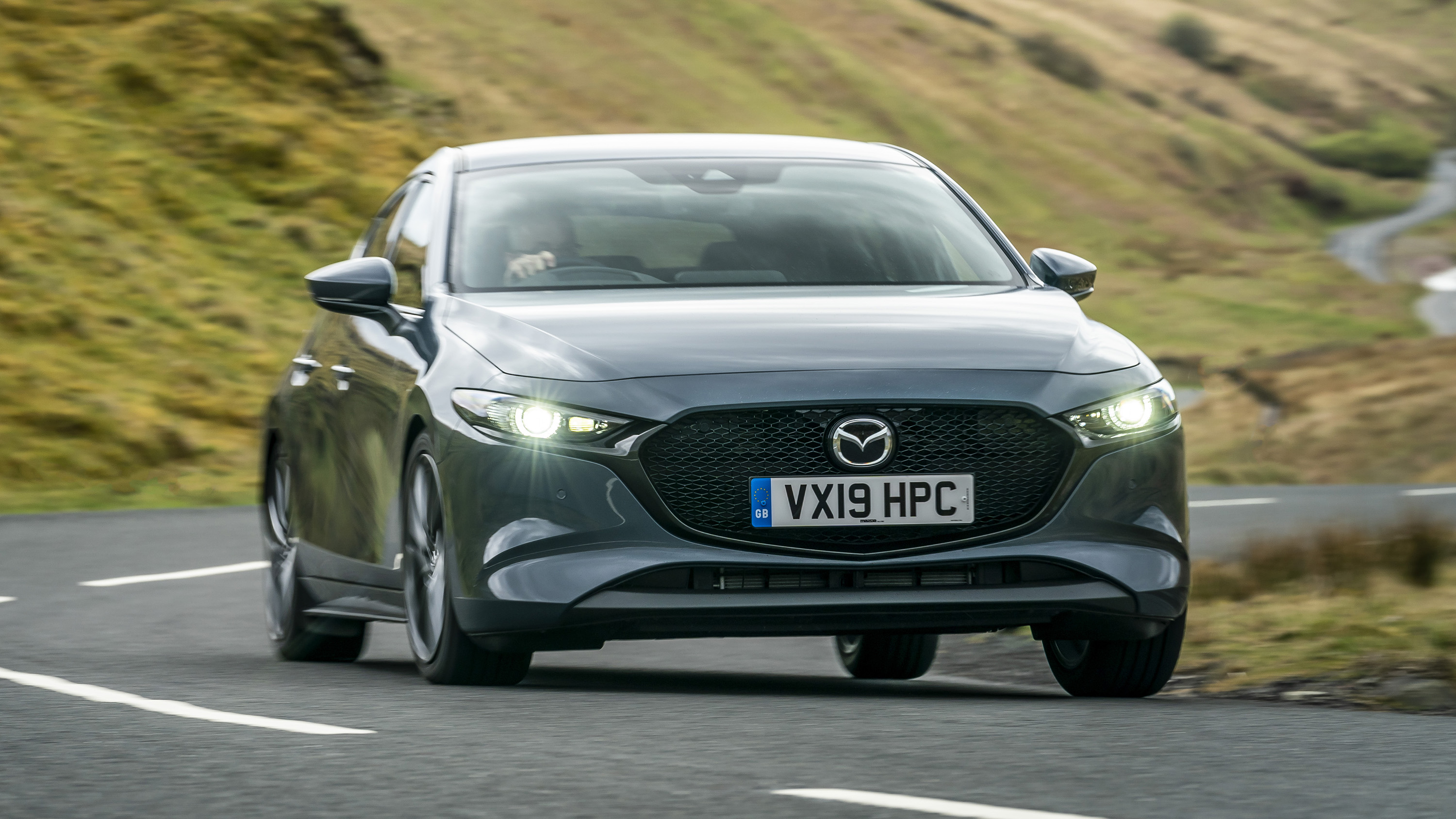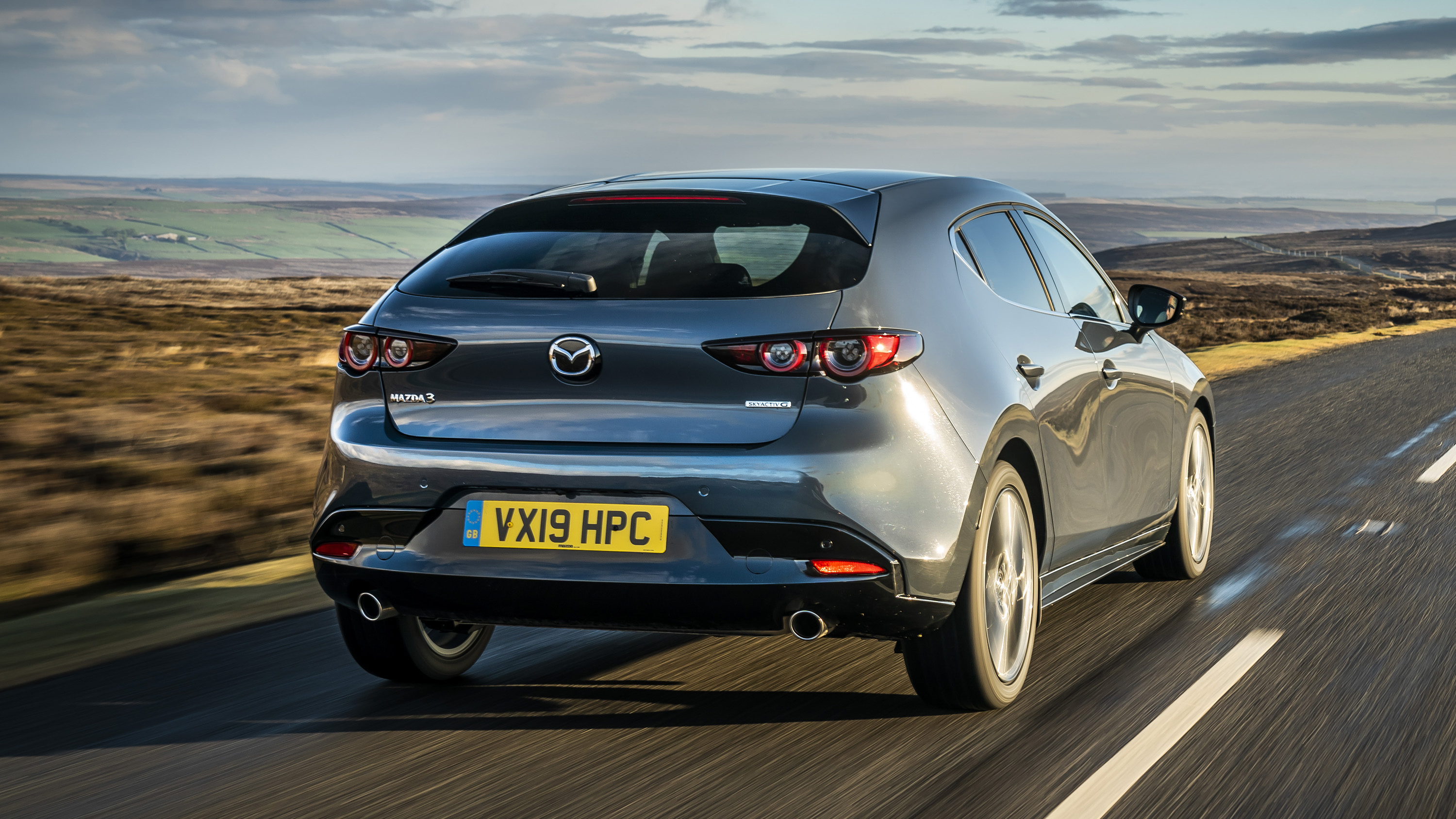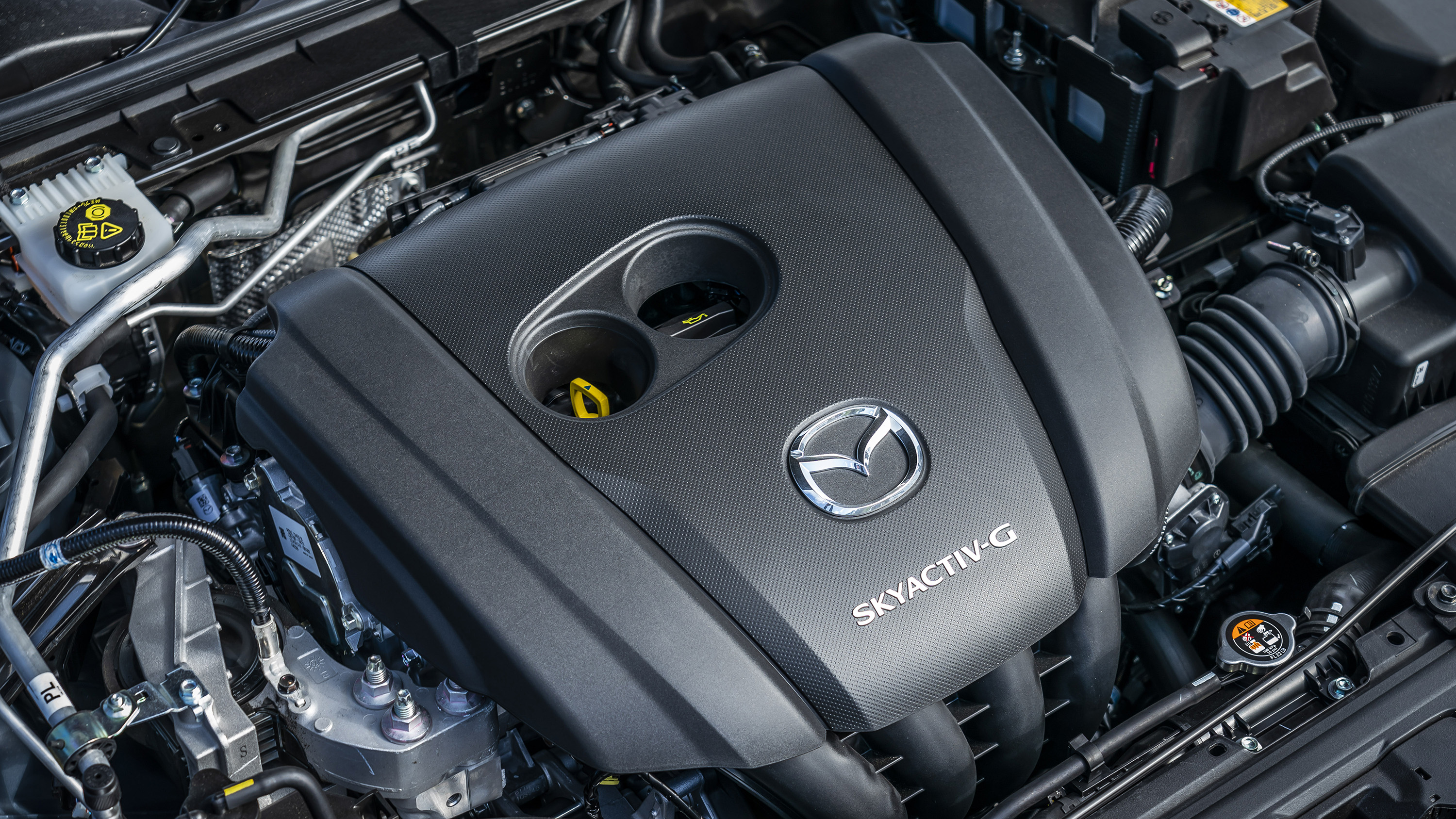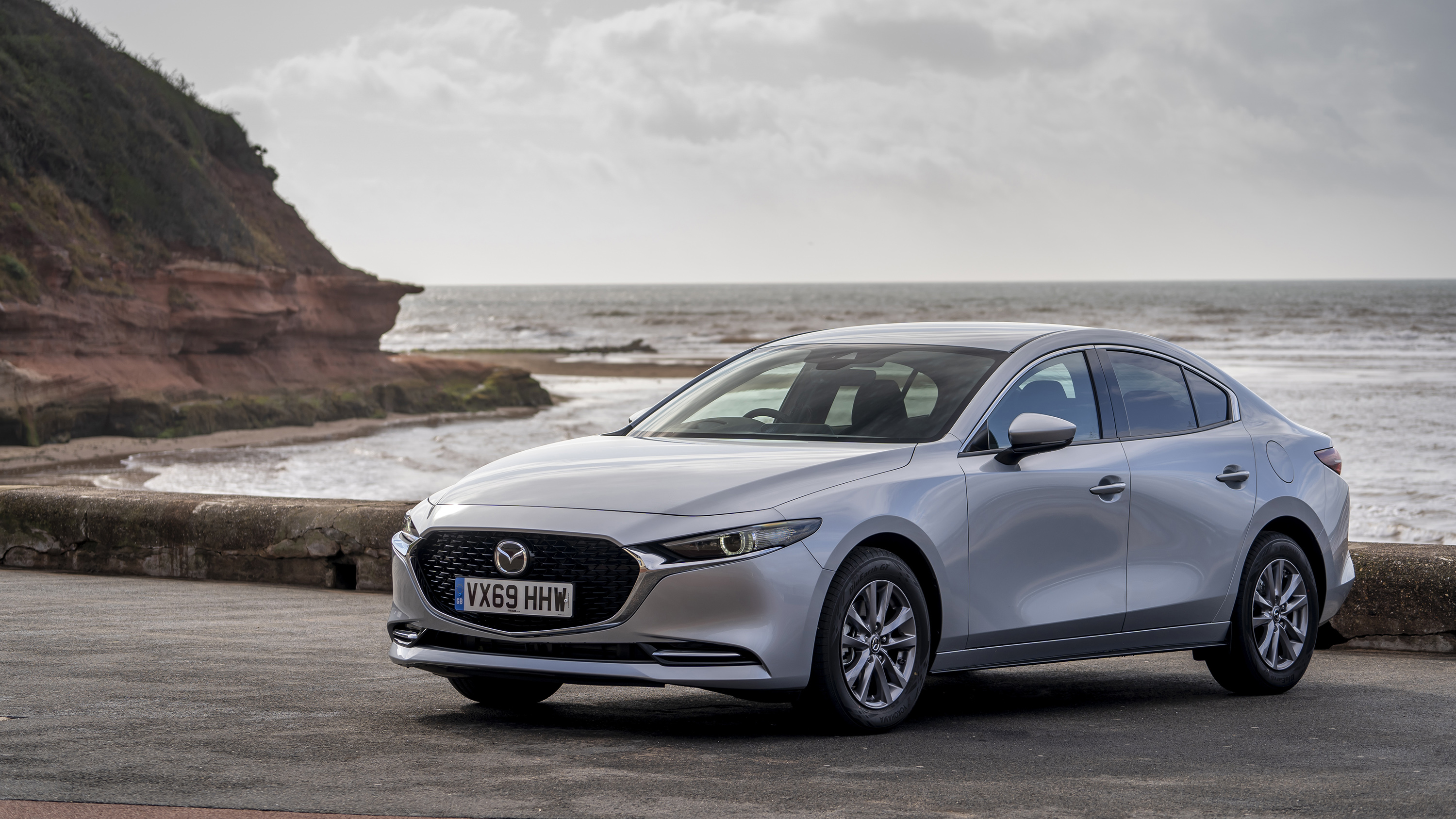
SPEC HIGHLIGHTS
- BHP
180bhp
- 0-62
8.2s
- CO2
100g/km
- Max Speed
134Mph
A few more horsepower in a hatchback. Worth a fuss?
Well, this could be the most advanced petrol engine this side of the new Ferrari V8.
Now you're really going to have to sell it to me…
OK. You may know that diesel engines operate by compressing the fuel and air to the point where it's so hot there's a spontaneous explosion. Compression generates heat – just touch your bike pump for proof. And compression is good for efficiency.
For many, many years the finest brains in the biggest car companies have been trying to get a petrol engine to do the same – compression-ignition instead of spark-ignition. They all failed.
Except, now, Mazda.
To be fair, this one still uses a spark, but in a very clever way. Most of the fuel is ignited by compression. The result is terrific economy and low NOx emission. And more power than the normal naturally aspirated Mazda 3.
OK, I'll put the kettle in and you can tell me the science later. First, is it any good?
Your standard Mazda 3 petrol is normally aspirated. It makes 122bhp, and the peak torque doesn't arrive until 4000rpm. The clever new engine, called Skyactiv-X, makes a healthier 180bhp, and although the max torque is barely any extra, it does come out to play at a more reachable 3000rpm. So if you don't shift down you've got more shove. If you do shift down and raise the revs beyond say 4000, you've got a lot more.
The 0-62mph time is 8.2 seconds. Which is OK for the power, but not great. The 3 in this trim weighs around 1400kg. Mazdas used to be light, but I suspect this one suffers from sharing so much structure with the firm's bigger cars and crossovers.
Top Gear
Newsletter
Thank you for subscribing to our newsletter. Look out for your regular round-up of news, reviews and offers in your inbox.
Get all the latest news, reviews and exclusives, direct to your inbox.
It's supposed to be all about economy. Do tell.
Yes, it uses less fuel than the less-powerful one. Much less when you're in suburban driving or sluggish main-road traffic flow. That's visible in the WLTP 'low' and WLTP 'medium' speed cycles. The WLTP 'extra high' speed cycle shows less improvement.
Anyway, my driving showed that day-to-day 50mpg is just about reachable, and it hardly drops below 35mpg when you flog it. I'd expect a normal hatch of similar power to show about 40mpg and 28mpg in the same circumstances.
The official WLTP is 48.7mpg on 16-inch wheels. For tax purposes, which still use the silly old NEDC cycle, that's 100g/km. Pretty amazing for a lively petrol hatch.
Does it feel weird?
No. It feels like big naturally aspirated engines used to feel – even though it actually has a supercharger. Throttle response isn't super-sharp, but it's more alert than a turbo. All-out acceleration progressively flowers as you swing up through the revs. If you want more, shift down. Mazda's gearbox is sweet.
And it doesn't sound dieselly. Diesels are noisy because the whole fuel intake goes bang at once, rather than in a progressive flame-front from a spark plug. Yet this engine is quiet. OK, there's a vague tinkling at about 1800rpm, almost like it's pinking (which, conceptually, it kinda is). For a petrol engine it's very slightly gruff as it revs towards its 6500rpm limit, but nothing to fret over.
And it's fitted to a Mazda 3. Any changes there?
Nope, it's all as per. Which means a really rather beautiful hatchback body. So beautiful, it's a bit dark and cramped in the back, but hey, other hatches are available if you want to go cabbing or have big kids.
The dash and driving environment are as eye-friendly as the outside. Easy to use too, and made of fine materials.
It corners with great alacrity. It rides rather tautly. Overall, we like, very much.
Oh and there's now a saloon version too. While the hatch has almost no creases in its bodywork, that saloon shares nearly no panels, and goes for a more traditional creased look. It drives the same.
Finally there's an all-wheel-drive version. But even 180bhp isn't enough power to justify it unless you live somewhere very slippy.
OK, I have a hot beverage in front of me. Give me the full boffinry.
The mechanics are fairly simple. It's a normal four-stroke design, with a high but fixed 16.3-to-one compression ratio. A supercharger pumps in extra air so it can sustain the lean-burn phase. The pistons have a flat top, except with one small ball-shaped hollow, just under the injector and spark plug.
In the induction downstroke, lots of air enters the chamber, and at the same time a mist of fuel is injected too. Next, the compression. By the top of the stroke, this fuel-air mixture is not quite at the point of self-igniting. If it did, it would be very hard to control, as all those other manufacturers found out.
At this point, another small dose of fuel goes into that ball-shaped area, followed by the spark. This isn't enough of an explosion to generate much power. Its main effect is to increase pressure in the chamber some more. Enough for the rest of the mixture to compression-ignite.
Because it's lean, the burn is cool and there's very little pesky NOx.
Now, it doesn't run like this all the time. On start-up, and at full throttle above about 5000rpm, it becomes a normal engine again. But when you call up an indicator on the dash display, you realise that's very little of the time. For much of the time when you lift off, it's not fuelled at all, because there's a mild-hybrid system in there too.
The transition between these modes - unfuelled, compression-ignition, and normal – is honestly undetectable as you drive. Which is amazing. Even more amazing is the degree of sensing and control of fuel that's needed to keep the thing running without misfires in the compression-ignition mode. Uniquely, it has individual pressure sensors for each cylinder.
My cup is empty now. Again I ask, worth a fuss?
It's about £2k on top of the 122bhp one. And there'll be fuel and tax savings to offset that. So yes, worth the money for the extra performance, which is now enough to give the Mazda 3's fine handling a workout.
But worth a fuss? I suspect this smallish power increase is just the beginning. This is proof of concept. But a good one.
Featured

Trending this week
- Car Review
BMW 1 Series









